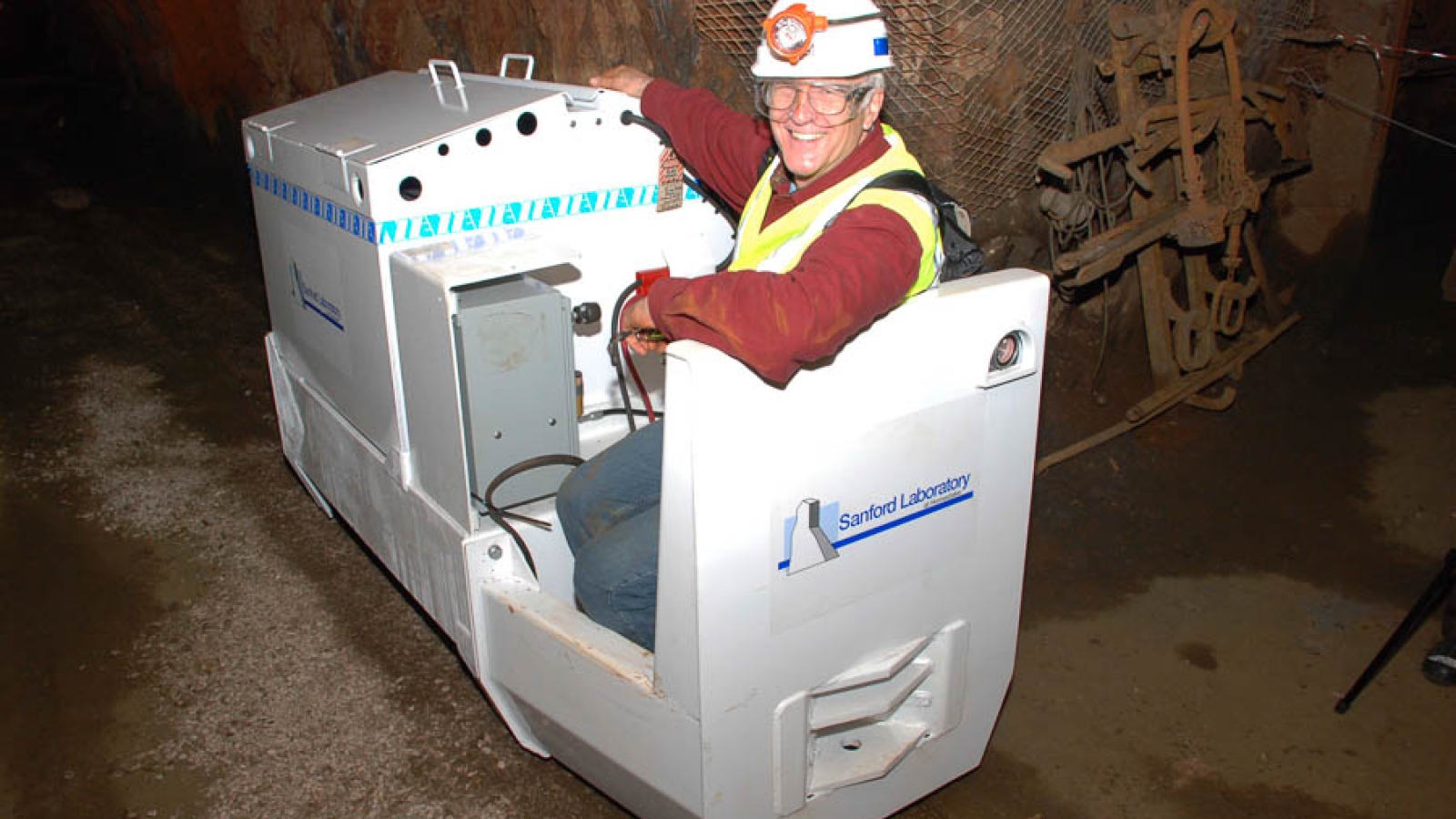
Jose Alonso sits in a motor on the 4850 Level of Sanford Lab. The photo was taken shortly after re-entry into the facility.
In 1958, Jose Alonso was a senior in high school at San Rafael Military Academy. He enjoyed math and engineering and thought that would be his college path. But a phone call from a friend that resulted in a tour of Lawrence Berkeley National Laboratory (LBNL) changed everything.
“You know, I lived in that area, but I didn’t even know that Laboratory existed,” Alonso said. “It was an amazing experience.”
He spent the day with a graduate student who introduced him to particle accelerators—the Bevatron, at the time, the world’s highest energy proton accelerator; the HILAC, Heavy Ion Linear Accelerator, the world’s highest energy heavy ion machine at the time; and the 184-inch Synchrocyclotron, the largest existing cyclotron at the time (and which was invented by Ernest Lawrence, a Canton, S.D. native for whom LBNL is named).
“I had no concept of particle physics until I saw those machines,” Alonso said. “That’s when the lightbulb went off for me. That’s when I decided to go into particle physics.”
Alonso received his undergraduate and Ph.D. from MIT and later returned to LBNL to do research.
“Eventually, I became the director of those very accelerators that first turned me on to particle physics,” he said. “Looking back, the lesson is that there is extreme value in giving students the opportunity to see what’s happening in science.”
Although he is “20 years past the age of retirement,” Alonso continues to keep up with physics research. In 2002, just five years after retiring from LBNL, Alonso took on a new role—that of lab director at the Sanford Underground Research Facility.
“I came in at the infancy of SURF. It was completely fascinating—a wonderful opportunity for physics research,” Alonso said. “There was nothing like this in the United States. I remember going underground for the first time with a crew that included former miners. The doors to the 4850 opened and one of the men said, ‘I’m home.’ What a wonderful experience that was.”
Alonso “retired” again in 2009 but has continued to follow developments at Sanford Lab.
“It’s wonderful to see what’s happening at SURF,” he said. “We were so fortunate to have the vision of T. Denny Sanford and the support of the State of South Dakota. And the leadership at the lab is terrific. I was always optimistic it would be successful, and I’m tickled with how well things are going now.”
Today, Alonso stays busy working on the shielding design and accelerator parameters for a sterile neutrino experiment located in Japan and is involved with proton therapy for cancer, which has repurposed the technology of older accelerators. In this therapy, a beam of protons or carbon is used to concentrate a radiation dose into a tumor, while sparing—as much as possible—the surrounding tissue.
“It’s the way technology works,” he said. “You develop a tool, you do the studies and then other applications are found simply because the technology exists. Basic research channels into areas that initially weren’t even thought of.”
Alonso said his interest in science remains high because “experiments in a variety of fields, for example, neutrino and dark matter research, aim to understand the universe, how things work, how everything is put together. And the more we get into basic research, the more we understand just how complex things are. And all the new discoveries are fascinating. I want to keep learning.”
Alonso pointed to the discoveries made by the LIGO (Laser Interferometer Gravitational-Wave Observatory) and the European-based Virgo detectors. On Feb. 11, 2016, the two collaborations announced that LIGO had made the first-ever direct observation of gravitational waves, which were generated by a tremendously powerful collision of two black holes 1.3 billion light-years away. A second gravitational-wave detection by LIGO was announced June 15, 2016, also from merging black holes. Then, in October of 2017, LIGO and Virgo detected the first gravitational waves made by merging neutron stars.
“That’s the fascinating discovery in science in the past few years,” Alonso said. “It will help us better understand how heavy elements are produced. In fact, researchers estimate that in the collision of those neutron stars, many earth masses of gold were produced.”
Alonso’s career in physics spans 60 years, but he has no plans to slow down.
“I’ve developed a tool kit of skills that I believe are still useful, so I’m delighted to continue to be involved with experiments.”
Learn more about accelerator experiments at LBNL